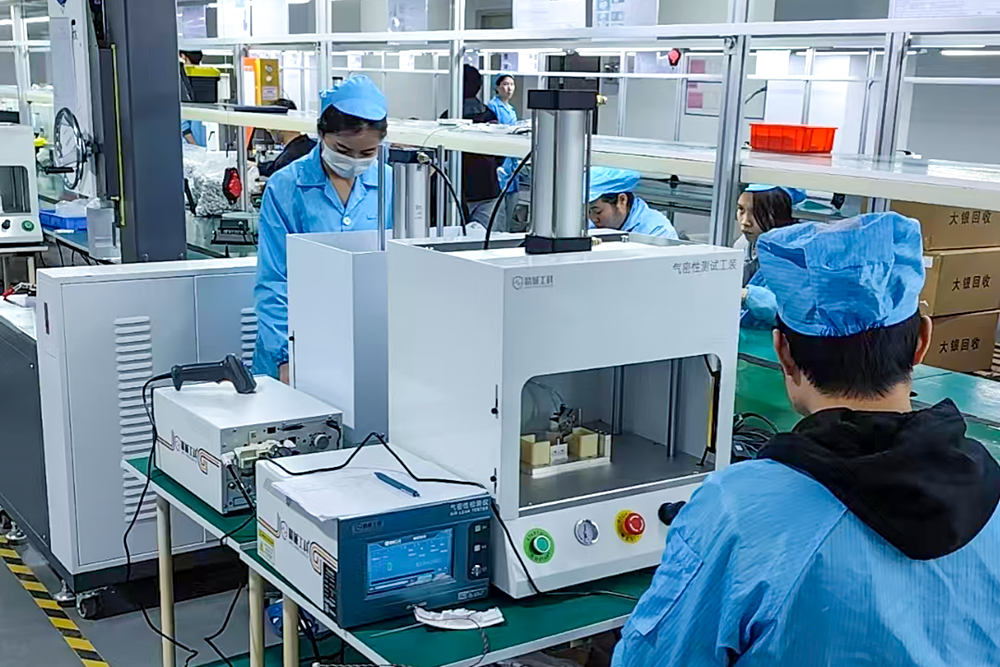Air tightness testing, as the name suggests, is a method of testing the sealing performance of a product.Despite the word 'air' in the name, not all airtightness tests use air. Depending on the characteristics of the product under test and the test requirements, different gases may be used as media. ThereforeAir tightness testerThe ability to cope with the detection of different gases is required.
I. Selection of gas sensors in gas tightness testing
1. Detection based on tracer gas concentration
This type of detection method utilizes the extreme permeability of tracer gases to detect small leaks.
Commonly used gases:
- Helium: Due to its extremely low molecular weight, strong permeability and stable chemical properties, it is one of the most commonly used tracer gases and is particularly suitable for high-precision and high-sensitivity leak detection.
- Hydrogen: The molecular weight is also small, the permeability is good, and the cost is relatively low compared to helium, but when using it, you need to pay attention to its flammable and explosive properties, and need to take appropriate safety measures.
Common sensors/detection methods:
- Helium Leak Detector:: This is the most commonly used and sensitive instrument for detecting helium leaks. At its core is a mass spectrometer analyzer, which accurately measures the amount of leakage by detecting the concentration of helium ions. This method is capable of detecting very small leaks and is widely used in semiconductors, vacuum technology, aerospace and other fields.
- Other gas concentration sensors: In addition to mass spectrometers, there are some other types of gas concentration sensors that can be used for the detection of helium or hydrogen, e.g. sensors based on the thermal conductivity principle, optical principle, but their sensitivity and accuracy are usually not as good as those of mass spectrometers.
Scope of Application: This type of method is mainly used for detecting small leaks and has a high accuracy in quantitative analysis of leakage.
2. Detection based on pressure/flow changes
This type of detection method determines whether a leak exists by measuring pressure or flow changes within the product under test and is suitable for detecting relatively large leaks.
Commonly used gases:
- Air: Inexpensive and easily accessible for routine industrial applications with low leakage requirements.
- Nitrogen: Inert gas, stable in nature, will not react with the material under test, suitable for occasions with high requirements on the test environment, such as electronics, medical and other fields.
Common sensors/detection methods:
- Pressure sensors/transmitters: Used to measure pressure changes within the product under test, e.g., differential pressure method, pressure decay method, etc.
- Flow sensors/flow meters: For direct measurement of the flow of leaking gases.
Scope of Application: This type of method is suitable for detecting relatively large leaks, is low cost and relatively simple to operate.
Flexibility in the configuration of Precision Engineering equipment:
Precision Engineering'sAir tightness testing equipmentSupports a variety of test methods, such asDifferential pressure comparison method, gas flow method, volumetric quantification method, positive or negative pressure methodWe can select the appropriate test method according to the customer's testing needs, different gases and product characteristics.
Precision Industrial Technology Nitrogen Filling + Gas Tightness Testing Machine
Second, equipment material compatibility
- Some gases may be corrosive or reactive and may react with some parts of the test equipment.This can affect the test results or even damage the equipment. Therefore, it is necessary to choose equipment materials that are compatible with the gases used.
- For example.Detection of certain acid gases requires the use of corrosion-resistant materials., such as stainless steel or Teflon.
- Precision Engineering will fully consider the compatibility of different gases during the design and manufacture of the equipment.The selection of appropriate materials and surface treatment processes ensures the long-term stable operation of the equipment.
III. Calibration and maintenance
- After testing with different gases, the equipment needs to be calibrated accordingly.to ensure the accuracy of the test results.
- Regular maintenance and servicing of equipment and replacement or cleaning of related componentsThis extends the life of the equipment and ensures the reliability of the test.
- Precision Engineering provides perfect after-sales service, including equipment installation, commissioning, training and maintenance, etc.We offer a full range of technical support to our customers.

Precision Industrial Solutions
Precision Engineering has more than ten years of experience in the field of gas tightness testing, we provide gas tightness testing equipment can flexibly respond to the needs of different gas testing.Our equipment has the following features:
- Modular designThe test module can be flexibly configured with different types of sensors and test modules according to the customer's needs.
- Intelligent control system: Test parameters and methods can be adjusted automatically according to different gases and test requirements.
- Highly accurate measurements: Advanced sensors and measurement techniques are used to ensure the accuracy and reliability of test results.
- Good compatibility: The material and design of the equipment take into full consideration the compatibility of different gases to ensure the long-term stable operation of the equipment.
Feel free to contact us for any of your needs regarding gas tightness testing or leak testing, including testing with different gases. Precision Industrial Gas Tightness, for your product quality.




